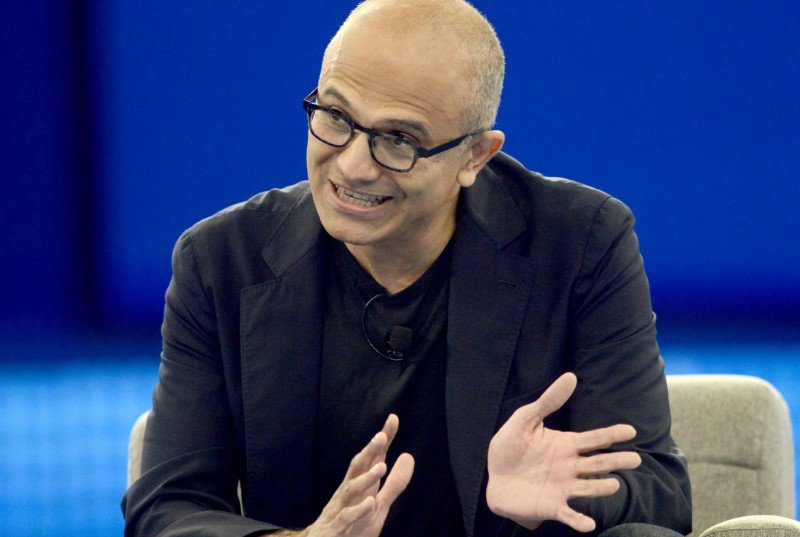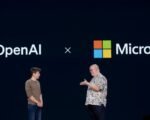Satya Nadella’s sweeping AI vision inspires, but critics question whether it’s built for people or profit
Satya Nadella’s latest message to Microsoft employees was meant to stir excitement. And in many ways, it did. But it also reignited a question that’s been bubbling under the surface for years: In the age of AI, will Microsoft prioritize individual users—or just the enterprises that keep its stock flying?
Nadella’s July 24 note laid out a bold vision for AI, speaking to personal empowerment, global potential, and an ambition that borders on utopian. But critics say Microsoft’s track record suggests a different story—one where individual needs are often swept aside for enterprise dollars.
The Dream: 8 Billion AI-Equipped Humans
Nadella’s note didn’t pull any punches. He spoke of a world where every person could summon a personal researcher, coder, or analyst at the push of a button. A world where AI doesn’t just answer questions but helps users build tools to solve problems, spark creativity, or reshape entire industries.
That’s the Microsoft vision.
It’s poetic, honestly. And it’s hard not to get swept up in it—especially when Nadella links this vision to deeply personal motivations. “It starts with each of us,” he wrote. “Our drive to learn, improve, and get better every day.”
But that’s just the message. What about the method?

Enterprise Focus Keeps the Money Flowing
Microsoft has been printing money in recent years. Its market cap crossed $3.8 trillion under Nadella’s leadership, fueled largely by business customers. Azure cloud, Microsoft 365, Dynamics—these are the cash cows. Not exactly household names at the kitchen table.
And in communications? The trend is even clearer.
• Microsoft Teams now holds 36% of market share, while Zoom dominates personal and small business spaces with 55%
• Skype—a once-loved personal tool—was officially axed
• Microsoft’s user interface and features in Teams are famously designed for corporate structures, not casual users
That’s no accident. Microsoft bet on the enterprise, and it paid off—big time. But it also sent a message: people come second.
Two Paths: One for Companies, One for People?
There’s a tension here, and it’s starting to show.
Take Microsoft’s approach to AI-powered tools like Copilot. In Word, Excel, and PowerPoint, Copilot enhances productivity, sure. But it’s largely targeted at professionals and enterprise licenses. Individual users? Often locked out unless they fork over a business-tier subscription.
Some consumer tools are showing up. There’s Windows AI Foundry, and Microsoft has expanded its skilling initiatives. But they feel like side projects, not centerpieces.
And here’s the irony: AI is most powerful when it’s accessible. When the artist, the student, the nurse, or the retiree can use it—not just the IT department at a Fortune 500.
The Skype Decision Still Hurts
For longtime Microsoft users, the quiet death of Skype still stings.
Once the go-to app for personal video calls, Skype was a household name. But it didn’t fit the enterprise mold. So Microsoft slowly starved it, then shelved it. The official justification was “streamlining communication tools.” But let’s be real—it was a business decision.
And it’s left a sour taste for many.
Because if Microsoft was willing to let a beloved, people-first tool fade away in favor of Teams, what’s to say it won’t do the same with AI?
What AI Could Look Like for Real People
Still, there’s room for hope.
Microsoft has shown in other domains that it can balance enterprise and personal needs. Xbox, for example, is a consumer juggernaut. Office tools like PowerPoint have embraced AI in ways that help everyone—from students to CEOs.
Here’s a simple table outlining how Microsoft currently splits its AI and software focus:
| Product/Service | Primary Audience | AI Integration Level | Individual Friendly? |
|---|---|---|---|
| Microsoft Teams | Enterprise | High | Low |
| Skype (Discontinued) | Individual | N/A | High (once) |
| Word/Excel Copilot | Enterprise | High | Medium |
| Xbox Game AI Features | Individual | Medium | High |
| Windows AI Foundry | Mixed | Emerging | Medium |
And there are glimpses of a future where Microsoft truly delivers on its “empowerment” mission. Imagine a world where:
-
High schoolers build their own AI tutors
-
Artists use AI tools to generate custom visual effects
-
Seniors use AI assistants for daily planning and medical support
-
Small business owners get AI-powered accounting and marketing advice
That’s the potential Nadella alluded to. But it needs follow-through.
A Credibility Gap Microsoft Must Address
So what now?
There’s no denying Nadella means what he says. His leadership has emphasized empathy as much as strategy. But the question is no longer “what is Microsoft saying?” It’s “what is Microsoft actually building?”
And this is where credibility gets tested.
If the best AI tools stay locked behind enterprise paywalls—or get buried under layers of corporate features—then regular users won’t buy into the vision. Worse, they’ll feel excluded from it.
This matters, not just for Microsoft’s image, but for global innovation. When only companies can access meaningful AI, society loses something. The small-time inventor, the curious teen, the single parent looking to build a better life—all get sidelined.
Microsoft says it wants to empower 8 billion people. That’s a beautiful goal.
But the tools need to follow the talk.








